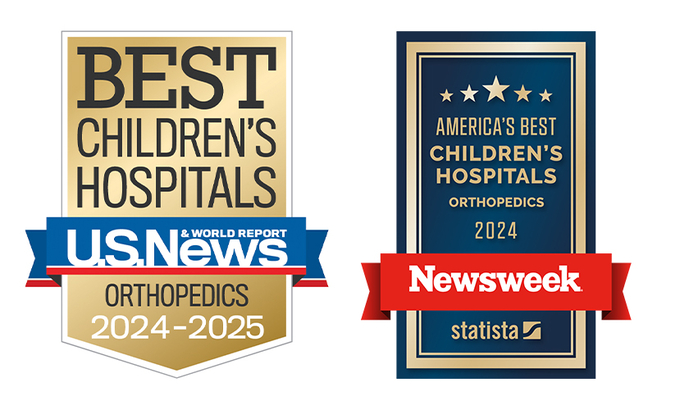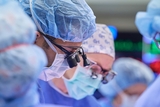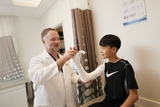Why Choose CHOP for Orthopedics
The Orthopedics Center at Children's Hospital of Philadelphia (CHOP) is one of the largest and highest-volume pediatric orthopedic centers in the world. We’ve been recognized worldwide for our innovation, expertise, family-centered care and outstanding success record.

Our center has consistently ranked among the best in the nation by U.S. News & World Report’s Honor Roll of Best Children’s Hospitals, again earning its No. 1 position in 2024-2025. We are also ranked among the best pediatric orthopedics programs in the nation by Newsweek. Our pioneering surgeons and multidisciplinary team are ready to treat any orthopedic condition your child may face.
We know you have many options when seeking care for your child. Consider these factors when choosing the treatment center that’s the right fit for you and your family:
- CHOP offers a depth and breadth of clinical services and subspecialty care to meet each child’s unique needs – from medical and surgical care to rehabilitation, nutrition, injury prevention, psychosocial support, and more. Watch a video about a day in the life of pediatric orthopedics at CHOP.
- The bones of children and growing teens are different from those of adults and require special care and advanced knowledge about growth plates and special growth-sparing procedures. Our orthopedic and sports medicine teams are experts in caring for growing bones and delivering the right treatment at the right time during your child's development.
- CHOP has provided high-quality, safe and effective pediatric orthopedic care for more than 120 years – and has among the best patient outcomes in the country for all surgical procedures.
- Our orthopedic surgeons are experts in operating on youth, understanding the unique needs of children and teens as they grow. Our team is highly experienced in performing complex surgeries, including complex hip preservation, pediatric ACL reconstruction, and vertical expandable prosthetic titanium ribs (VEPTR) to treat a rare spine and chest wall disorder. In some cases, we are the only orthopedic center in the region or nation to offer these treatments for youth.
- Our team of world-renowned orthopedic surgeons, sports medicine physicians, nurse practitioners, physician assistants and support staff provide complete and individualized care for your child. Meet our team.
- We offer dedicated subspecialty programs to meet each patient’s unique needs. We have dedicated teams who specialize in caring for youth with sports injuries, spine conditions, hip disorders, bone tumors, thoracic insufficiency syndrome and more.
- Safety is the basis of everything we do and every decision we make about your child’s care. See how we practice safety in orthopedic surgery.
- We work with many other specialists at CHOP to coordinate your child's care, including oncologists (cancer doctors), pulmonologists (lung doctors), radiologists and pediatricians.
- Best-in-class orthopedic care, close to home. Families can access our services at several convenient locations (including outpatient surgery centers) in Pennsylvania and New Jersey. See our locations. At these convenient locations, our expert teams provide diagnostic testing, treatment and follow-up care for orthopedic patients. They will also coordinate your child’s care with other specialists in the CHOP network, offering complete and individualized treatment.

Second opinions
Hearing that your child needs surgery can be overwhelming. A second opinion or consultation can give you the information you need to help make informed decisions about treatment.

Orthopedic Center locations
Our pediatric orthopedic specialists provide care at many CHOP Care Network locations located throughout the region. Find the best possible care for your child, close to home.